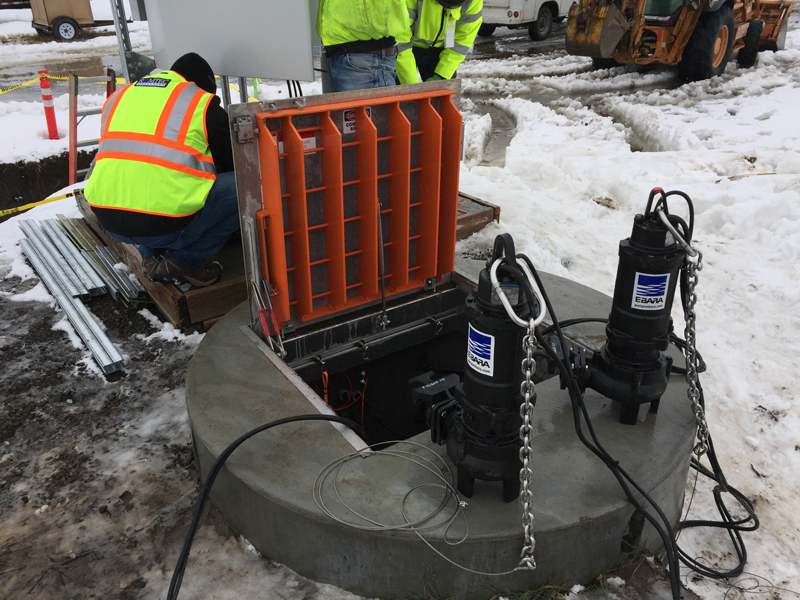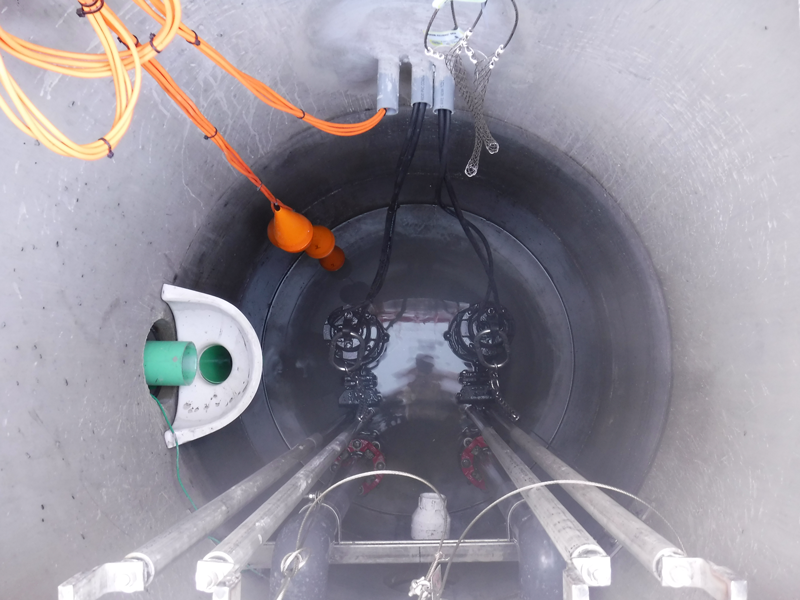
In this 3-part blog series, we are going to take a look at the topic of pumps and how to make the best pump selection for your pumping system or lift station. Romtec Utilities designs, engineers, manufactures, and supplies pumping systems for all types of applications. At the heart of our system are the pumps. Many pump station owners and operators have strong opinions about pumps, such as brands, styles, and configurations. Working with these preferences is as important for success as the pump, itself, but we will look at that in a later piece. Today, we are going to look at the pump requirements. There are many possible scenarios, and Romtec Utilities can help you get the best pump to meet those project needs.
One of the first requirements for selecting a pump is the fluid that will be pumped. Romtec Utilities’ systems typically pump water, such as wastewater, stormwater, or potable water, but we have also designed pumping systems for glycol and other fluids. Pumps are designed to handle different conditions related to water type. These conditions include things like the presence of suspended solids, viscosity, slurry, or clean water. Pumps are designed for particular water conditions. Axial flow pumps, for example, are great for pumping high volumes of water under low pressure, but they should not ever be used to pump water with any suspended solids. Grinder pumps, on the other hand, are best when pumping slurry. This usually means pumping wastewater with solids that can be macerated into a slurry prior to or during the pumping cycle.

Understanding the water type being pumped will point our engineers in a good direction for a specific pump selection, and the pumping requirements will help refine the search even more. Each system will have a target pumping rate and specific pressure conditions for the pump to handle. Meeting these requirements comes down to understanding the specific curve for each pump. A pump curve is a graph that shows pumping rate (typically in GPM, gallons per minute) against pressure (typically as TDH, total dynamic head). The graphed line is curved, showing how a specific pump will operate in a range of conditions. The ideal pumping conditions for the pump will fall in a specific window on its curve.
The pump curve is derived based on other aspects of the pump itself. The most important considerations for a pump curve are related to the size of the pump. The size is specified by the discharge piping and the horsepower of the pump motor. By increasing or decreasing the pump horsepower from the motor, the pump curve can be changed. This helps to produce a pump that is sized to the requirements of a specific project. Manipulating pump horsepower is dependent on the available pump motors from the manufacturer. Certain pump brands have more or less flexibility to affect the pump horsepower. On any project, however, horsepower isn’t the only engineering tactic used to meet specific pumping requirements.
Pumping systems are rarely designed with a single pump that is perfectly sized to handle the pumping requirements. One reason to use more than one pump is for redundancy, but another reason is to increase the pumping capabilities of the system. This is the pump configuration. Pump stations are often referred to as simplex, duplex, triplex, quadraplex, and so forth, depending on the number of pumps. This allows a pump station to “scale up” its pumping rate to meet higher pumping requirements. If one pump is unable to handle the inflow to the pump station, another pump can kick on to increase the pumping rate. Using pump curves and horsepower, pumps are selected to meet specific requirements in a specific pump configuration.

The best configuration is typically a duplex configuration. This uses two pumps, so it has redundancy and can cycle starts between the pumps to reduce wear. It also means you only have to buy two pumps. As requirements become stricter, however, they can push the pump configuration toward a triplex system or beyond. Although these configurations cost more, they allow a single system to handle a much wider flow range, which is almost always more economical than using multiple systems. This is also true with booster pump stations that adjust the pumping rate to meet pressure requirements. Pump configurations are important for pump station designs to meet pumping requirements that can be related to flow, levels, or pressure.
In this blog we looked at some common scenarios when addressing various pumping requirements. These requirements center on the water type, the flow rate, and the pressure. Selecting a pump does not merely reflect the requirements, however, the pump size and configuration will also need to be considered for the best pump selection. In the next blog, we will take a look at the pump itself. How does the design of the pump, its components, and the available power source affect a good pump selection? Romtec Utilities will address these topics in the next installment of this blog series for how to select the correct pump.
